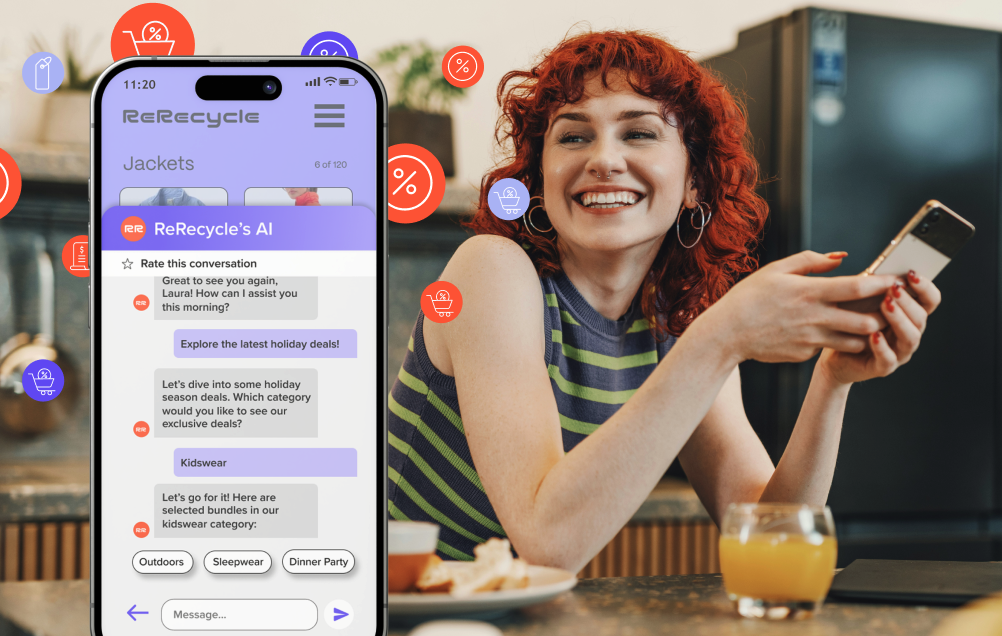How to Start Selling Your Products with Voice Shopping
Voice Shopping is by far the fastest-growing sales channel in history. The use of voice assistants is quickly becoming just as common as using a smartphone, becoming a go-to channel for consumers to search the web, communicate with others, and in particular – to shop!
Homes all around the world are filling up with voice assistants, with the global voice assistant market already valued at $1.7 billion, and predicted to reach $26.8 billion by 2030. Amazon alone claims to have sold over 100 million Alexa devices in 2019 alone. The following year, Google revealed that half a billion people around the world use Google Assistants.
Not only are conversations happening through these devices, but over 43% of voice assistant users use them to shop, and nearly 5.5 million adults in the US make purchases with their smart speakers on a regular basis. By the end of 2020, 50% of all searches will be done by voice. Already, Google says that 20% of searches are voice-activated.
Voice Shopping Isn’t the Future – It’s Already Here
Got an Android phone and need to buy something at Walmart? Just say “Hey Google, talk to Walmart” and start shopping. Alexa lets you browse and make purchases on millions of voice-optimized shops. This isn’t some sci-fi technology that’s planned for the distant future; it’s already here and millions of consumers are quickly getting used to this convenient new way of browsing and shopping online.
However, while large brands have joined the voice Shopping trend, smaller brands haven’t been able to get started, up until recently, creating a voice product catalog and the voice-enabled store was difficult and expensive. However, all that is changing.
How to Get Your Brand on the Voice-Shopping Bandwagon
It’s not as complicated as you may think, thanks to all of the great tools and technologies you have at your disposal. We put together a few tips to help you get to your first voice sale!
Tip #1: Create a Voice Store
The first thing you need to do is create a voice shop so that your products are accessible via the millions of voice assistants used around the world. With Rep, you can create a dynamic AI-powered voice shop that users can browse and buy from on their Alexa device. With a quick and easy integration process, you can automatically turn your online store into a voice store.
Our quick integration means your voice shop can be up and running in no time:
- Start by creating an account and integrating your existing online store (all it takes is a click!)
- Choose the products and collections you want to offer consumers in your voice store
- Choose your voice out of 16 different voices and accents available to you
- Select a welcome message to greet new and returning voice shoppers that visit your store
- Consider adding discounts or promotions for voice shoppers – and tell them when they visit the shop or ask about “today’s sales”
- Make sure you get paid by integrating a voice payment gateway like Amazon Pay. This will ensure payments are processed to your account
It’s like having your own personal salesperson there to greet every visitor with customized conversation options.
Tip #2: Give Your Brand a Voice
Part of creating your Rep voice shop involves choosing your brand voice and what you’ll say to visitors. Don’t take this step lightly – just like you wouldn’t hire just anyone to represent your brand and greet visitors in a brick and mortar shop. Listen to the different voices and accents we have available and choose one that you feel best resonates with the brand. The same goes for the different messages you choose – they should all be in line with how you represent yourself and the image you want to convey.
This means:
- The welcome message greeting newcomers and returning shoppers
- The types of discounts and sales promotions you offer
- The tone and wording in the personalized voice conversations with shoppers
- … and more!
Tip #3: Step into the Mind of the Shopper
Rep does pretty much everything for you when you create your voice shop, but it helps to have a better understanding of your customers’ shopping experience with voice. Flow and navigation on your site are very different for voice shoppers. They can’t visually see the menu or content, so you have to make sure they get all of the important information they need using voice conversations.
Here are a few examples:
- A newcomer can visit your shop by asking Alexa to open your shop (without any additional requests), after which they will be greeted by your welcome message that welcomes them and tells them about your latest promotion. You can also ask them what they’d like to do next – for example “Welcome to SHOP! Would you like to see our bestsellers?”
- Make it easier for people to reorder their usual items. If someone tells Alexa “buy that dog food again from SHOP”, create a custom response that uses their previous order and user information for a personalized experience.
- Checkout is a great place to ask if they’d like to see something else. For example, before completing checkout, you can recommend another item that’s typically purchased with what the buyer has in the cart.
Tip #4: Tell the World
Don’t forget to tell your audience that your voice shop is live! Now’s the perfect time to promote your voice store. Send a newsletter, post on social media, and promote with influencers – tell them what to say when they visit your store so you can even track the success of different campaigns. For example, a customer can say “A beauty blogger sent me”.
Most importantly, keep optimizing. The above tips are a great place to start, but optimization is an ongoing process. Once you start getting visitors and sales, analyze results and see where you can improve things by adjusting the conversations or adding more scenarios. Request a demo today!
Quick Answers and FAQs
How can I integrate voice commands into my online store to enhance the shopping experience?
Voice search reduces friction, especially for mobile shoppers who prefer speaking to typing.
Create Voice-Activated Navigation
Let customers navigate through your online store using simple voice prompts. "Go to women's section" or "Show bestsellers" creates a hands-free browsing experience that feels natural and efficient.
The key is designing clear interaction patterns with confirmation responses. When a customer says "Show summer collection," your system should acknowledge the request and execute it immediately. Ensure voice navigation works alongside traditional methods so customers can switch between interfaces seamlessly.
Enable Shopping Cart Management by Voice
Voice assistants can transform how customers manage their shopping carts. Imagine the convenience of saying "Add the blue shirt in medium" or "What's in my cart?" without clicking through multiple screens.
Common Mistakes to Avoid:
- ❌ Requiring exact product names → ✅ Support natural descriptions
- ❌ Limited command options → ✅ Enable quantity adjustments by voice
- ❌ Complex checkout process → ✅ Create voice shortcuts
Connect with Popular Voice Assistants
Integrate your store with voice assistants like Alexa, Google Assistant, and Siri to reach customers where they already are. This expands your store's presence beyond traditional web browsers.
Create custom skills that enable conversations like: "Hey Alexa, ask [Your Store] about new arrivals" or "Hey Google, reorder my favorite shampoo from [Your Store]."
Voice authentication adds security while keeping the experience frictionless. Your customers will appreciate the ability to shop while cooking, driving, or multitasking at home.
What technologies are essential for leveraging voice recognition and natural language processing in voice commerce?
Voice Recognition Technology Foundation
Speech recognition forms the cornerstone of voice commerce, transforming spoken commands into actionable data. Modern systems employ sophisticated acoustic models that accurately capture diverse accents and speaking patterns—even in noisy environments.
✅ Critical components include:
- Advanced speech-to-text engines with noise cancellation capabilities
- Voice biometrics for secure user authentication during transactions
- Adaptive learning algorithms that improve recognition accuracy over time
Natural Language Processing Components
NLP bridges the gap between human speech and machine understanding by extracting meaning from natural conversation. Unlike traditional search, voice commerce requires contextual comprehension across multiple interactions.
The most effective NLP systems feature:
- Intent recognition frameworks that understand shopping commands
- Entity extraction tools that identify product names, attributes, and quantities
- Contextual understanding modules that maintain conversation flow
❌ Common pitfalls to avoid:
- Over-reliance on keyword matching rather than semantic understanding
- Failing to account for conversational context across sessions
- Neglecting dialect and speech pattern variations
Voice Search Optimization
Voice searches differ fundamentally from typed queries—they're longer, more conversational, and often phrased as questions. When shoppers ask, "Find me waterproof hiking boots under $100," the system must parse multiple parameters simultaneously.
Voice search requires:
- Conversational query processing that handles natural language questions
- Semantic matching algorithms connecting spoken requests to product catalogs
- Real-time inventory integration for accurate availability information
Voice User Interface Design
A well-designed voice interface creates intuitive shopping experiences that feel natural and effortless. The conversation flow must anticipate user needs while gracefully handling misunderstandings.
The most successful voice commerce implementations integrate these technologies seamlessly, creating shopping experiences that feel as natural as speaking with a knowledgeable sales associate—all through the convenience of voice commands.


.png)










